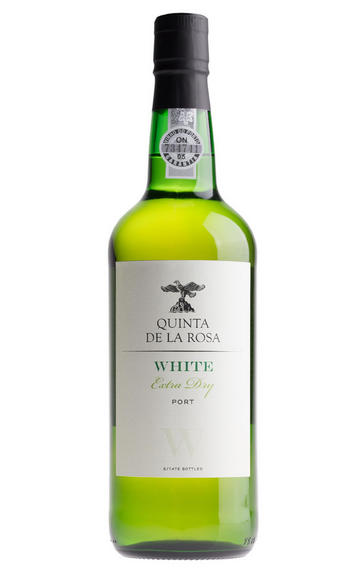
Critics reviews
This is aromatic with lemon rind, honeysuckle, beeswax and stones. Sleek and creamy with mellow fruit. Citrus and golden apples. Zest and crushed herbs on the finish.
Drink now
James Suckling, JamesSuckling.com (June 2023)
About this WINE
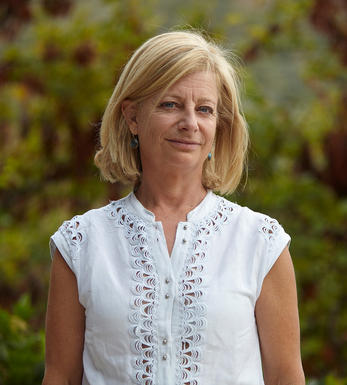
Quinta De La Rosa
Quinta de La Rosa is a small estate in the heart of the Port wine-growing region in Alto Douro, near Pinhao, owned and operated by the Bergqvist family: Tim, his wife Patricia, son Philip and his two daughters, Sophia and Olivia, with the aid of the talented winemaker Jorge Moreira since 2002
The Quinta and its vineyards were given to Tim's mother as a Christening present by her parents, the Feurheerds, who established the property in 1906.
It remains one of the few Single Quintas where the vineyards start at the bank of the Douro and rise 450 meters to the towering top of the mountain. From the river's edge to the top, one passes through 11 different microclimates. This gives La Rosa great flexibility to add variety and complexity to its Port.
La Rosa and Tim Berqgvist are special. In many ways they represent what the Douro is all about... pride, courage, tradition, and the determination to produce the finest product from in one of natures' most difficult climactic conditions.
Quinta de la Rosa produces small quantities of superb quality Ports and red wine (Val da Clara Douro label)
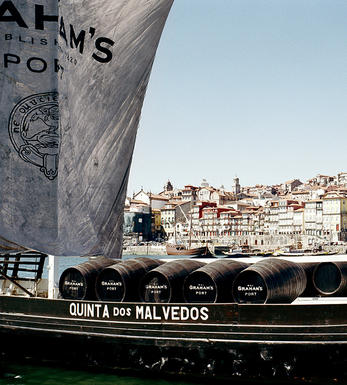
White Port
White Port is made from white grapes, and comes in two styles – dry and sweet – although even the driest styles are on the medium side. The sweet version is the traditional style of White Port and tends to be rich and grapey.
Best drunk lightly-chilled with a plate of nuts (preferably while watching the sun go down over the Douro River), this underrated Port wine style can make an excellent apéritif.
The sweetest examples are known as lagrima (tear) after the viscosity of the wine in the glass. The drier style is a more recent innovation: it is off-dry, often with a nutty hint, and is best drunk young. Despite Ernest Cockburn's maxim that “the first duty of Port is to be red”, it is also increasing in popularity.
White Port is largely vinified in the same way as red (albeit with less or no maceration time). It is aged for around 18 months in stainless steel or concrete vats (and occasionally wood) before bottling and does not improve with ageing. Since 2006, age classifications of 10, 20, 30 or 40 years old can be used, although these are rare.
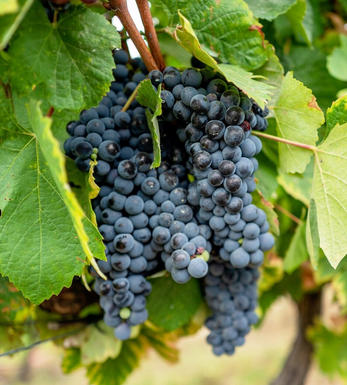
Port Blend
There are around 40 different grape varieties permitted in the production of Port - however the vast majority of Ports are produced from a blend of 5 grapes - Touriga Nacional, Touriga Francesca, Tinta Barroca, Tinta Roriz, and Tinto Cão.
Touriga Nacional produces small, dark-skinned grapes that produce opaque black wines of great extract and high tannins - it gives grip, body, and structure to the blend.
Touriga Franca has a thinner skin and consequently produces wines lighter in colour and tannins than Touriga Nacional. It contributes fruit, aroma, suppleness and roundness.
Tinta Roriz is the Portuguese name for Tempranillo and its high sugar content and low acidity contribute colour and fruit.
Tinta Barroca which is normally grown at highish altitudes and on north-facing slopes, is prized for producing wines of delicacy, finesse and with smooth, velvety fruit. It brings elegance and sweet, ripe fruit to the final blend.
Finally Tinto Cão produces fine and complex wines, though it is probably the least important of the 5 grapes as its painfully small yields have reduced plantings to almost insignificant levels.


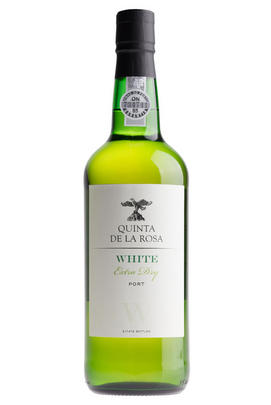
Buying options
Add to wishlist
Description
Quinta de la Rosa is a small estate in the heart of the Alto Douro, owned and operated by the Bergqvist family. It remains one of the few Single Quintas where the vineyards start at the bank of the Douro and rise 450 meters to the towering top of the mountain. La Rosa and Tim Berqgvist are special. In many ways, they represent what the Douro is all about: pride, courage, tradition and the determination to produce the finest product in one of nature’s most difficult climactic conditions.
A tall, chilled glass of white Port and tonic will convey you magically to the bucolic Quinta de la Rosa’s sun-drenched, riparian terraces in no time. Rich and rounded, the slight sweetness works well (try adding chopped mint rather than orange or lemon) and is wonderfully refreshing. Equally, it is delicious on its own – but always with a bowl of salted almonds.
Berry Bros. & Rudd
wine at a glance
Delivery and quality guarantee